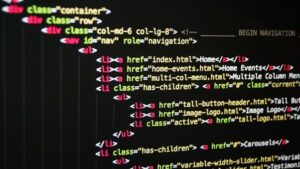In the vast universe of programming, coding problems can often feel like a never-ending crossword puzzle. Each line of code is a clue, and each function is a solution waiting to be deciphered. The thrill of solving a complex problem can be as satisfying as filling in that last square on a Sunday morning crossword.
But what happens when the coding problems seem to multiply, and the crossword grid expands endlessly? It’s a reality many programmers face, and it’s a challenge that can be both daunting and exhilarating. This article will delve into the maze of never-ending coding problems, offering insights and strategies for navigating this intricate landscape.
Never Ending Coding Problems Crossword

Programming and puzzle-solving echo one another, drawing from the same set of skills and offering the challenge of unravelling intricate conundrums. To programmers, each unresolved coding problem acts as an intriguing crossword requiring finesse and acuity for resolution. This labyrinth of puzzles intertwines with the thrill of problem-solving, rendering a riveting experience.
The Intersection of Puzzles and Programming
The Confluence of Programming and Puzzles extends far beyond pure logic. It’s a blend of analytical thinking, intuition, pattern recognition, and creativity — much like solving a crossword puzzle. Each function in a code equates to a clue in a crossword, its intrinsic relevance becoming evident only on solving adjacent clues. For instance, debugging can parallel the dilemma of crossword clues, as finding a discrepancy at one location often unravels mistakes at others. This fascinating intersection promotes a unique cognitive exercise: leveraging logical thinking while fostering creativity.
Cognitive Benefits of Crossword and Coding Challenges
Substantial cognitive benefits abound in both crossword and coding challenges. These exercises sharpen the mind, improve memory and concentration, and uphold mental agility. Delving into a complex coding problem invokes cognitive functional enhancements similar to those gained from solving a crossword. For example, tackling runtime errors in Python script would engage the brain’s problem-solving faculties as profoundly as finding the perfect fit for a crossword puzzle’s 14-down.
Analysing the Challenges Presented
Immersed into the never-ending ocean of coding problems’ crossword, several challenges arise. The previously highlighted importance of this activity underscores the importance of addressing such hurdles. In this section, the author seeks to delve deeper into these challenges, segmented under various levels of complexity and the nature of problems typically encountered.
Levels of Complexity
Diversifying levels of complexity within the never-ending coding problems crossword facilitates its audiences with stages of progressive difficulty. Starting with simple loops and basic function calls, users gradually advance through intermediate complexities dealing with nested functions and multi-threaded operations. This distribution maintains a gradient, buoying the code writers from simpler obstacles to the increasingly intricate conundrums.
Typical Problems Encountered

Users commonly face issues related to coding syntax, program structure, and logic errors. Illustrating this, an individual might struggle to structure their code correctly, leading to logic errors that impede the functionality of the overall program. Moreover, deciphering the crossword clues often adds an extra tier of problem-solving, as they represent a poetic nomenclature of programming constructs.
Strategies for Tackling “Never Ending Coding Problems Crossword”
The world of coding crosswords, specifically revolving around the “Never Ending Coding Problems Crossword,” provides its fair share of challenges – demanding a combination of programming knowledge, problem-solving skills, and determination. To make these challenges more navigable, it becomes essential to strategize your approach.
Tips for Beginners
For beginners, foundational understanding is key, and their journey to mastery begins with familiarising themselves with programming’s rudimentary elements – like loops and basic functions. A good starting point is consistent practice, as it reinforces understanding of these concepts. One could do this by reading and understanding the program, running and testing it, and finally, modifying it to see the changes in function.
Additionally, understanding that mistakes are part of the process, such as syntax errors, becomes crucial. Syntax errors, often trivial mistakes, can completely halt a program. Beginners, therefore, must cultivate patience and develop an eye for detail to spot and rectify these errors.